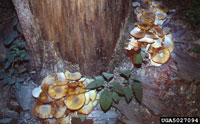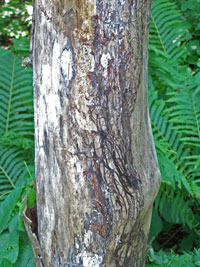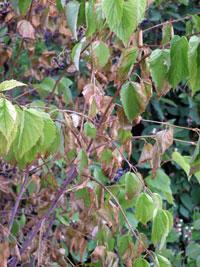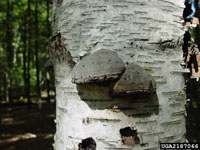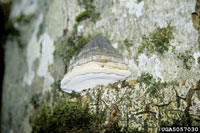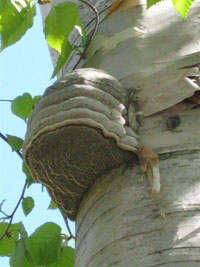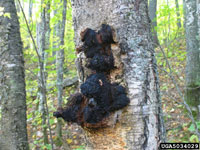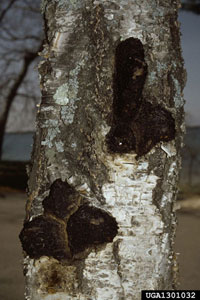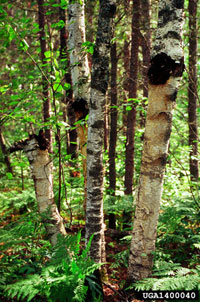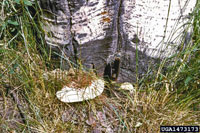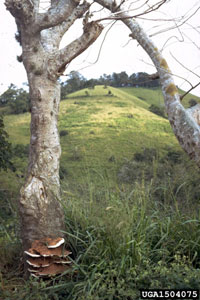Extension > Garden > Diagnose a problem > What's wrong with my plant? > Deciduous Trees > Birch > Fungi growing on trunk or branches
Birch > Trunk/Branches > Fungi growing on trunk or branches
1 of 4
Armillaria root rot
Armillaria spp.
- Clusters of honey-colored mushrooms may grow at the base of the tree in fall
- Wood is decayed, white, soft and spongy, and this may extend from the base of the tree well up into the trunk
- Thick black, shoestring-like fungus can sometimes be seen under the bark, around roots and in the soil around the base of the tree
- Infected trees have poor growth, dead branches in the upper canopy, undersized and/or yellow leaves
- Flat white sheets of fungal growth (mycelia fans) grow between the bark and sapwood at the base of infected trees
- More information on Armillaria root rot
2 of 4
Heart rot
Polyporus squamosus, Laetiporus sulphureus, Fomes
fomentarius, Phellinus igniarius, Piptoporus betulinus
- Many colors, shapes and sizes of fruiting bodies may be seen
- Fungal fruiting bodies arise along the stem; often near a pruning wound, crack or other wound
- In cross section of the trunk, the wood at the center is discolored, soft, crumbling, stringy or spongy
- Canopy may show no symptoms, or may have small yellowing leaves or dead branches depending on the extent of the decay
- More information on heart rot
3 of 4
Canker rot
(aka. sterile conk or cinder conk)
Inonotus obliquus
- Rough, cracked black, knob or cone like fungal growths protrudes from trunk, often near an old wound or branch stub
- Internally fungal growth is spongy, colored yellow-brown to
rust-brown - Infected trees often break at the point of the fungal growth
- Mottled white and reddish brown wood decay can be seen within infected trunks
- More information on Canker rot
4 of 4
Ganoderma root and butt rot
(artist's conk)
Ganoderma applanatum
- Fungal conks, a semicircle shelf fungi, can be found from the base of the tree up to 3 feet high on the trunk
- Conks are reddish-brown and shiny on top, white and porous underneath; a rim of white may be visible on the edge of
growing conks - Infected wood at the base of the tree is white, soft, stringy
or spongy - Infected trees frequently break or fall over in storms
- Leaves are smaller in size and turn yellow earlier than normal
- Canopy appears thin with few leaves and multiple dead branches
- More information on Ganoderma butt rot



